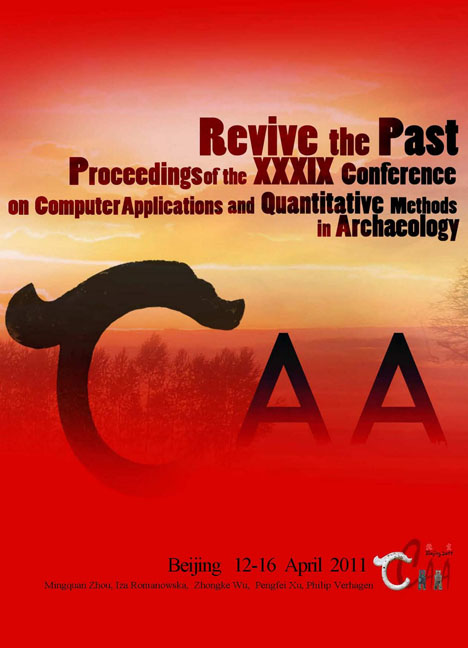 Revive the Past
Revive the Past Published online by Cambridge University Press: 23 June 2021
Abstract:
This paper describes a method for discovering meaningful relationships in a point set, based on the concept of relative neighbourhood, which can be applied to groups of archaeological sites or artefacts. In contrast to notions that use linear distances, such as nearest neighbour, the relative neighbourhood concept explores “regions of influence” belonging to pairs of points. This allows extracting several types of proximity networks using only the spatial coordinates of the point set. As explained in the paper, relative neighbourhoods can reveal more effectively the contextual relationships of sites or artefacts. The paper also explains how to measure two connectivity properties called integration and control, which are useful to understand the degree of accessibility and relative importance of each node within the network structure.
Key Words: Archaeological Network Analysis, Archaeological Spatial Analysis, Relative Neighbourhood, Graph Connectivity
Introduction
In many archaeological projects one is given the spatial coordinates of a set of points (e.g. sites, artifacts) and is asked to discover relational links, such that the resulting network becomes perceptually meaningful in some sense (Fig. 1).
In the case of archaeological sites, for example, we may want to explore several scenarios of inter-settlement relationships to figure out if they reveal some kind of regional organization. Once the network is drawn, we may want to identify sites that exercise a certain degree of control over the network structure, indicating perhaps that their position is more strategic than others. Alternately, we may want to measure how integrated/segregated each settlement is within the network and therefore within the region. After measuring control and integration, we then may use additional information to formulate heuristic hypotheses about the role and importance of each site within past cultural systems. As a way to tackle those issues, this paper:
Presents a method to derive a relational network purely from the spatial coordinates of a point set.
Suggests measuring two connectivity properties in order to analyse the degree of accessibility and relative importance of each node of the network in an objective way.
The focus is on the method itself, not on its applications, which have been discussed in other publications (Jiménez-Badillo 2004; 2006; 2009a; 2009b; Jimenez and Chapman 2002).
To save this book to your Kindle, first ensure no-reply@cambridge.org is added to your Approved Personal Document E-mail List under your Personal Document Settings on the Manage Your Content and Devices page of your Amazon account. Then enter the ‘name’ part of your Kindle email address below. Find out more about saving to your Kindle.
Note you can select to save to either the @free.kindle.com or @kindle.com variations. ‘@free.kindle.com’ emails are free but can only be saved to your device when it is connected to wi-fi. ‘@kindle.com’ emails can be delivered even when you are not connected to wi-fi, but note that service fees apply.
Find out more about the Kindle Personal Document Service.
To save content items to your account, please confirm that you agree to abide by our usage policies. If this is the first time you use this feature, you will be asked to authorise Cambridge Core to connect with your account. Find out more about saving content to Dropbox.
To save content items to your account, please confirm that you agree to abide by our usage policies. If this is the first time you use this feature, you will be asked to authorise Cambridge Core to connect with your account. Find out more about saving content to Google Drive.